CentOS 7 installation and configuration graphic tutorials under VMware10
If Ubuntu is the most popular Linux operating system for desktop users today, then CentOS is the most popular Linux distribution for companies, enterprises, and IDCs. Thanks to its excellent stability, there are countless well-known websites worldwide. Choose it.
CentOS is a free version based on the source code of Red Hat Enterprise Linux (expensive but excellent reputation). Therefore, it not only inherits the superior stability of RHEL, but also provides free updates, so it is installed in server providers and small and medium-sized companies. The volume is almost the largest Linux distribution, and it has now officially joined Red Hat. For students who are engaged in Internet technology, CentOS should be worthy of your in-depth study and research...
Required preparations:
1、 VMware Workststion 10 virtual machine software
2、 CentOS7 operating system
Based on the installation process of CentOS7 under VMware 10:
1、 First click New Virtual Machine, select "Typical", and then the next step.






2、 After the initial work is completed, select the desired CentOS 7 ISO image, click "Start this virtual machine", and then enter the installation interface.


3、 Select the language during the installation process, select English here, the default is fine
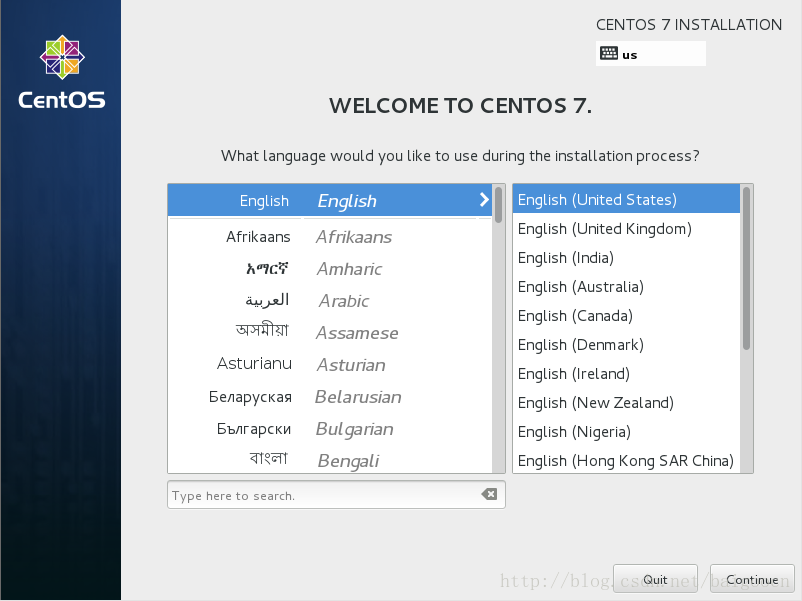
4、 Enter the main interface of installation and configuration. The main configuration work of CentOS 7 is performed on this interface. If it is not completely set up, the Begin installation button will be grayed out.
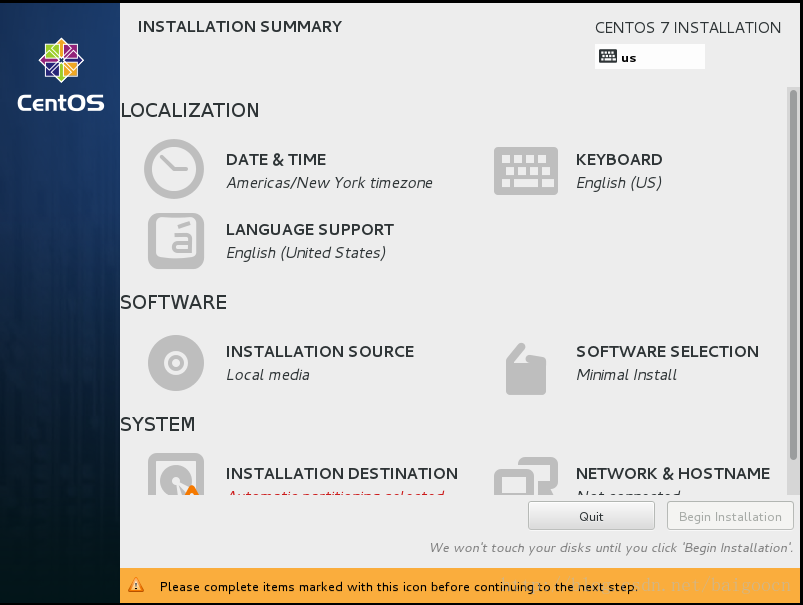
5、 Select the DATA&TIME item in LOCALIZATION, select the time zone Asia\Chongqing, and press Done to return after setting. As shown below:
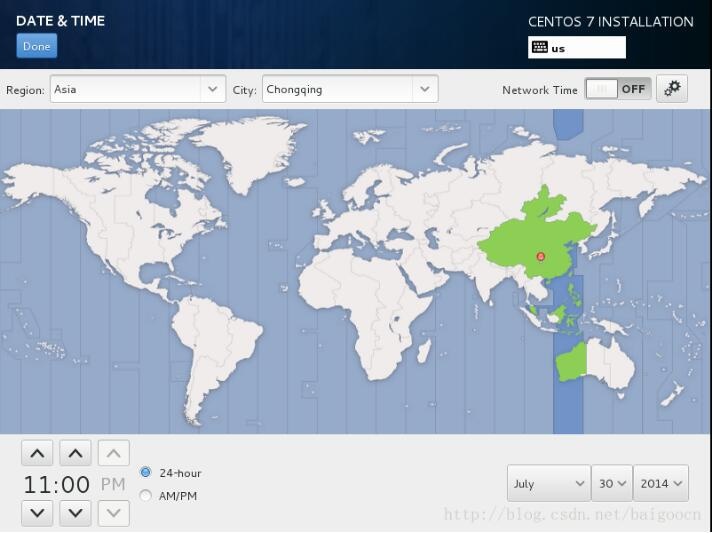
6、 The KEYBOARD in LOCALIZATION can use the default, as shown below:

7、 To set the supported language, select the LANGUAGE SUPPORT item in LOCALIZATION. In this article, in addition to the default English, Chinese is selected. After setting, press Done to return. As shown below:


8、 Installation source configuration, select the INSTALLATION SOURCE item in SOFTWARE, this article selects the default installation source. After setting, press Done to return. As shown below:
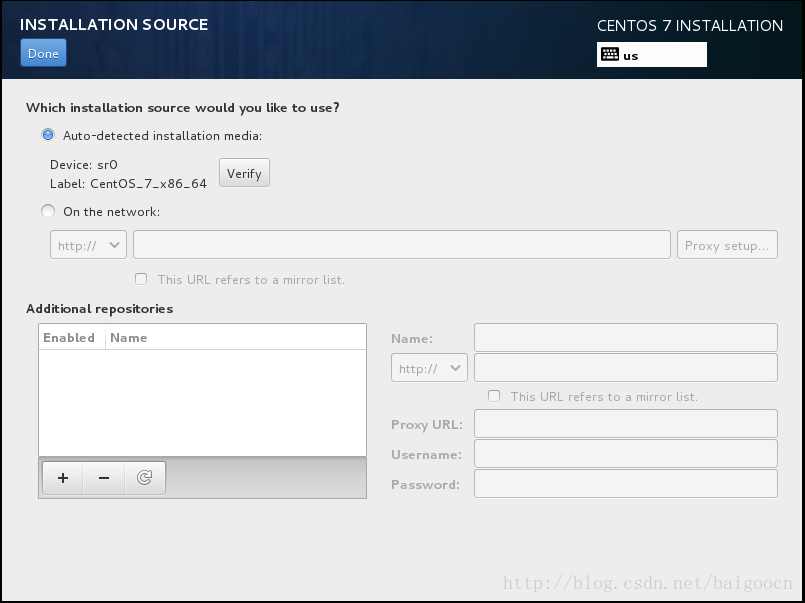
9、 System environment and software installation, select the SOFTWARE SELECTION item in SOFTWARE, and choose the environment you want according to your needs. This article selects the GNOME Desktop environment (on the left), on the right is some additional software and tools, choose to install according to your needs. After setting, press Done to return. As shown below:

10、 To set the system partition, select the INSTALLATION DESTINATION item in SYSTEM, and in Other Storage Options, select the configuration partition item "I will configure partitioning", and press Done to confirm, as shown in the figure below:
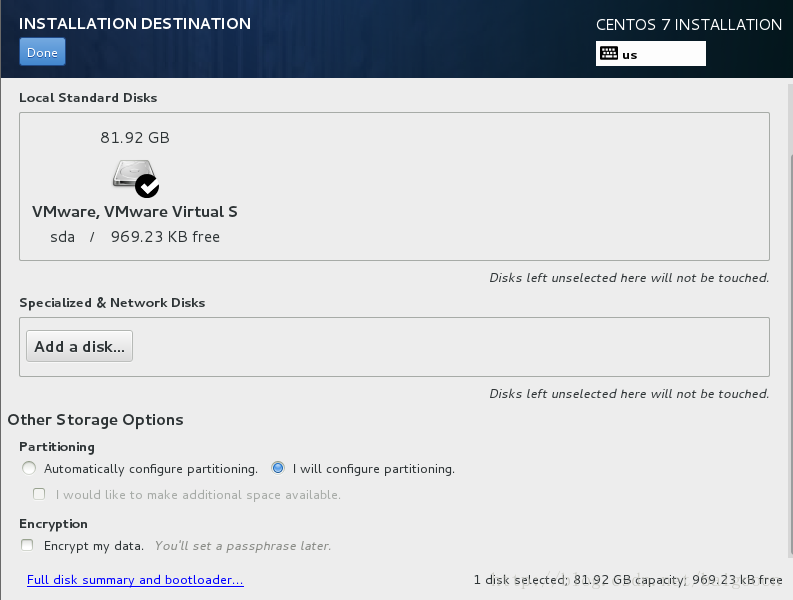
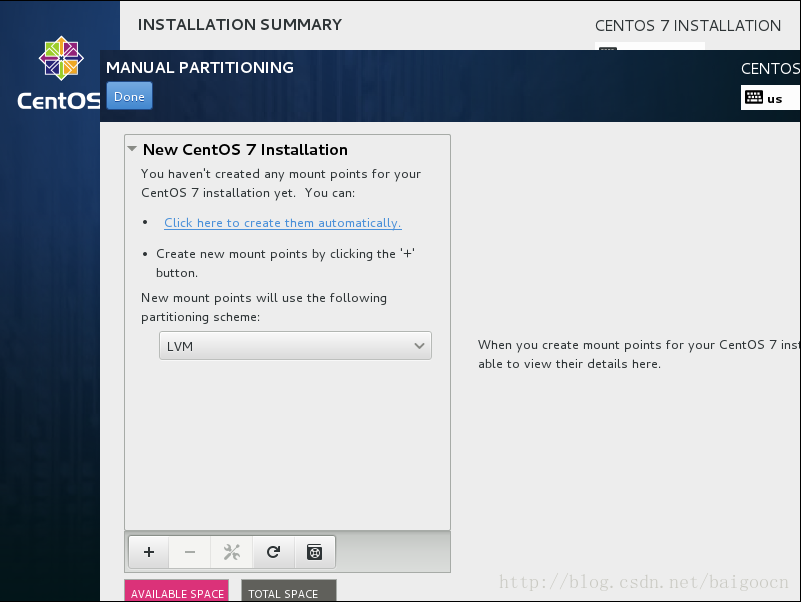
11、 Manual partition, select Standard Partition partition method, press Done to confirm, as shown below:

12、 The Centos partition format is completely different from Windows. The Windows partition format is generally NTFS format and it is OK when installed on the C partition of the hard disk, but it is generally divided into two partitions in CentOS:
One is the root partition, namely "", and the file system is in ext4 format.
The other is the swap partition (when the memory is less than 2G, it is set to 2 times the memory; when the memory is greater than or equal to 2G, it is set to 2G).
At this time, click the "+" sign to add a mount point and create the two partitions above, as shown in the following figure:


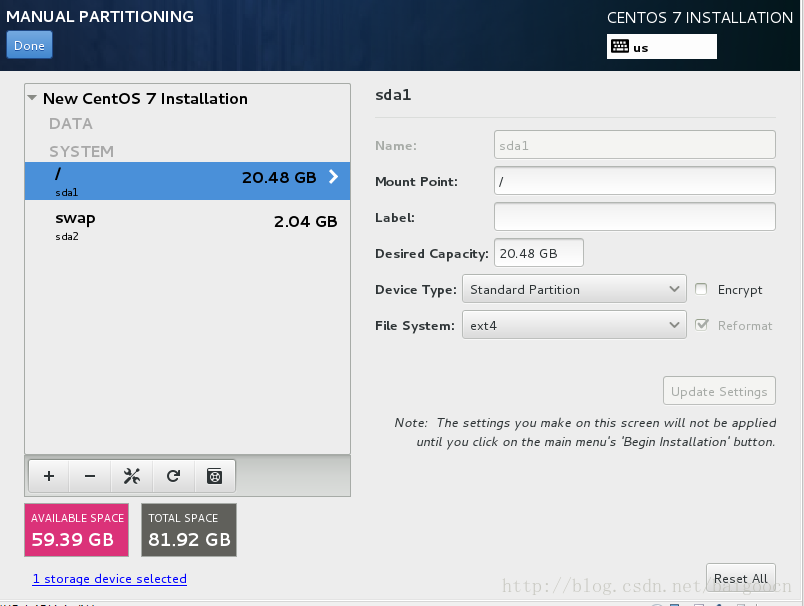
After the partition is completed, select Done to confirm, and select Accept Changes in the pop-up dialog box, as shown in the following figure:
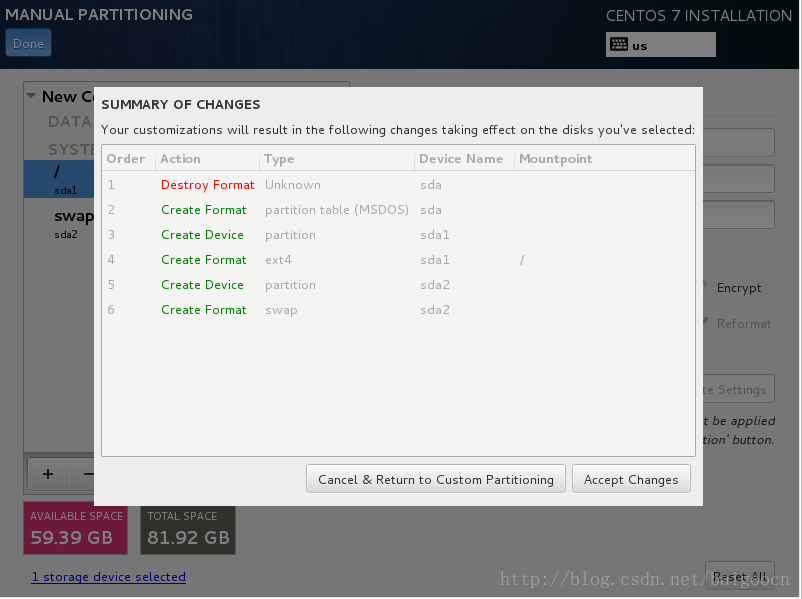
13、 Network configuration, mainly open the network card, set the hostname, as shown in the following figure:

Select "Configure", and after setting as shown in the figure below, click "Save" and "Done" to return, as shown in the figure below:
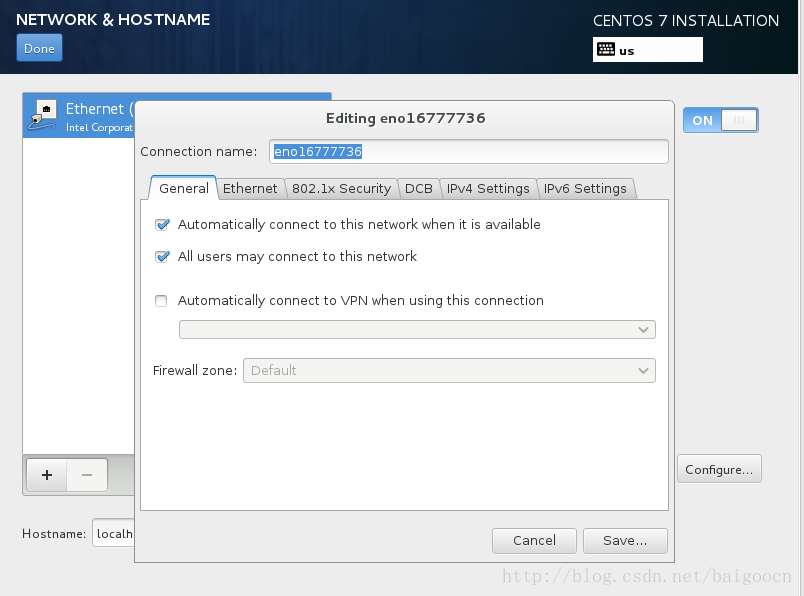
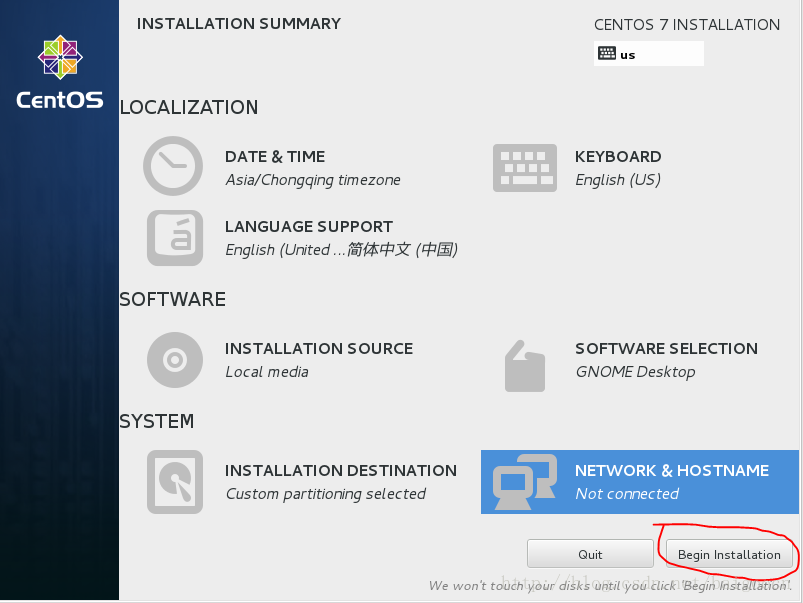
14、 After completing the above steps, the basic configuration has been completed. At this time, the Begin installation button in the main interface will be optional, click the button to install. When you enter the installation interface, you can see the "USER CREATION" item. Before completing the installation, you can further configure user settings, as shown in the following figure:

The installation process of the software package usually takes a long time. At this time, you can set the USER SETTINGS. Click the ROOT PASSWORD option to set the root user (root) password, as shown in the figure below. After setting, click Done returns, as shown below:

Then proceed to the USER CREATION setting, that is, create a new account, enter the user name and password, note that the user here is an ordinary user, similar to the administrator and ordinary user under Windows system, the root user under CentOS corresponds to Windows Administrarot user under, the user created here corresponds to a normal user under Windows. The specific settings are shown in the figure below. After setting, press Done to return.
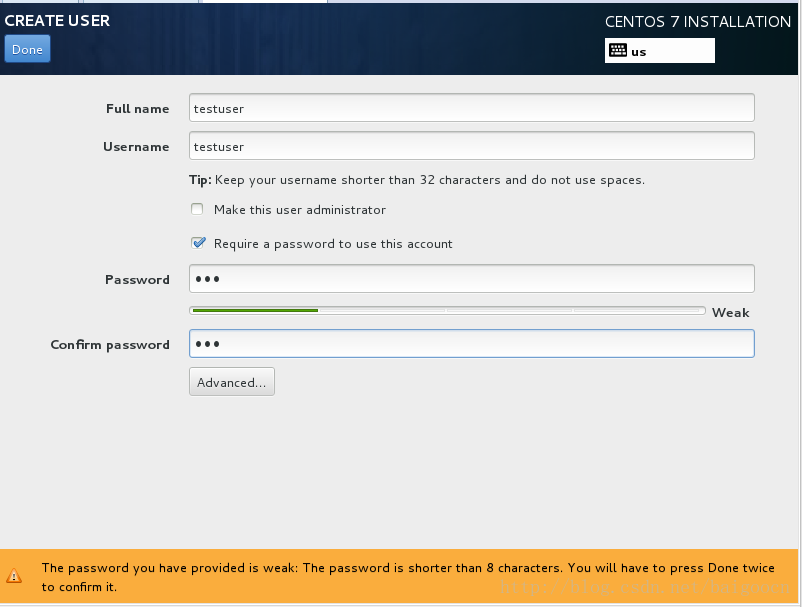
Return to the main interface, and wait for the software to continue to install...
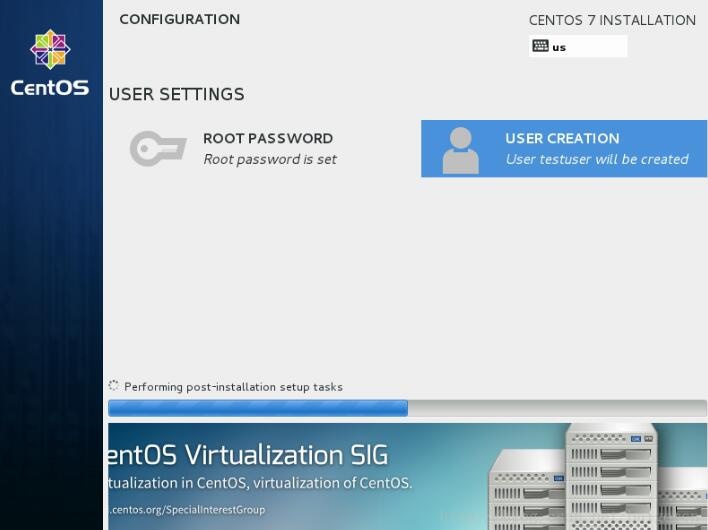
15、 After the installation is complete, click reboot to restart.

After restarting, enter the LOCALIZATION settings, click LICENSE INFORMATION, enter the protocol interface, check the check box "I Accept...", click Done to return after completion.
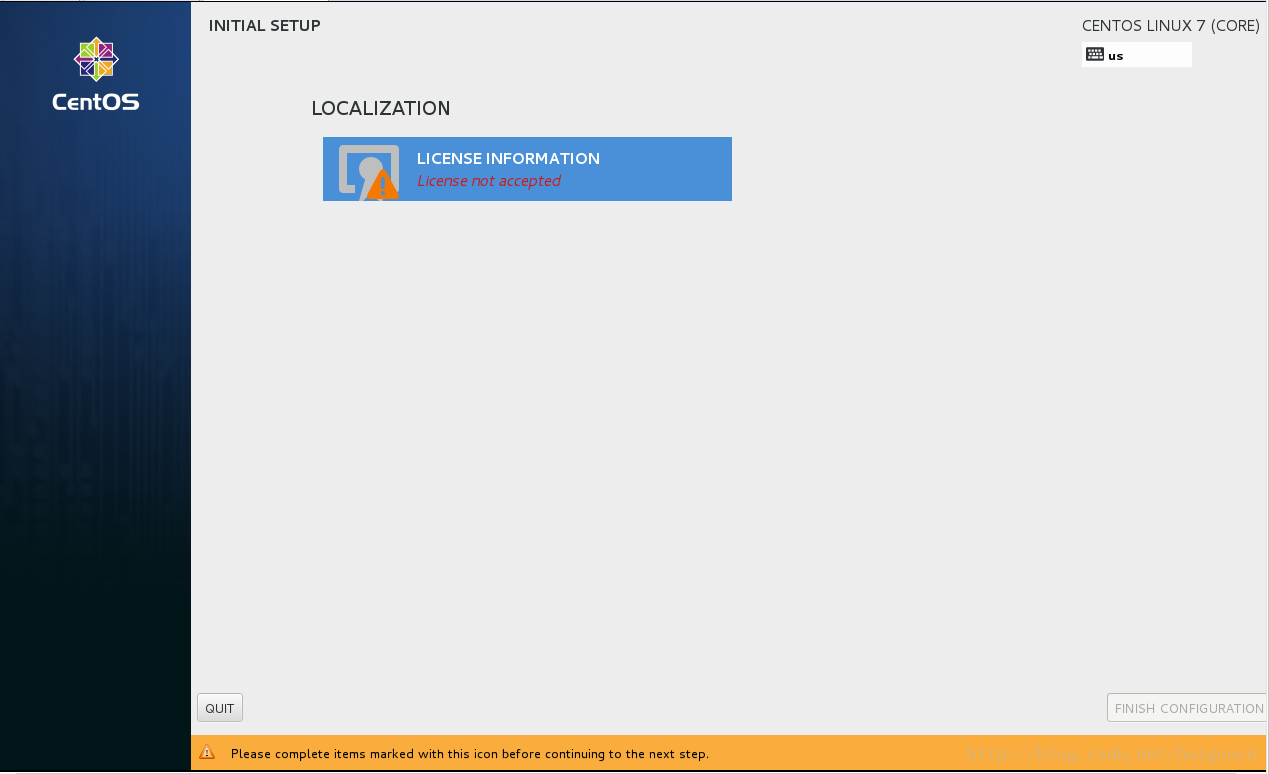
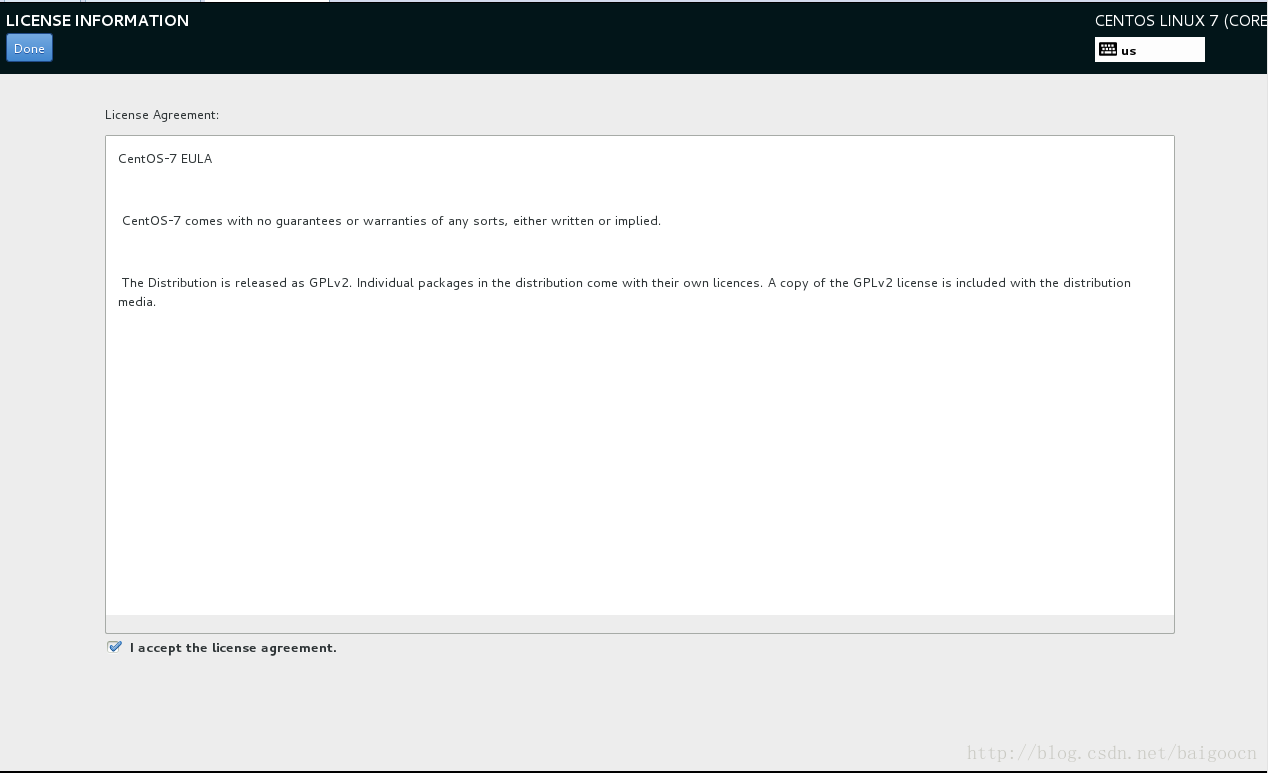
Click "Finished configuration" to enter the kdump setting interface, uncheck the check box, click "Forward" to continue, and click "Yes" to confirm.
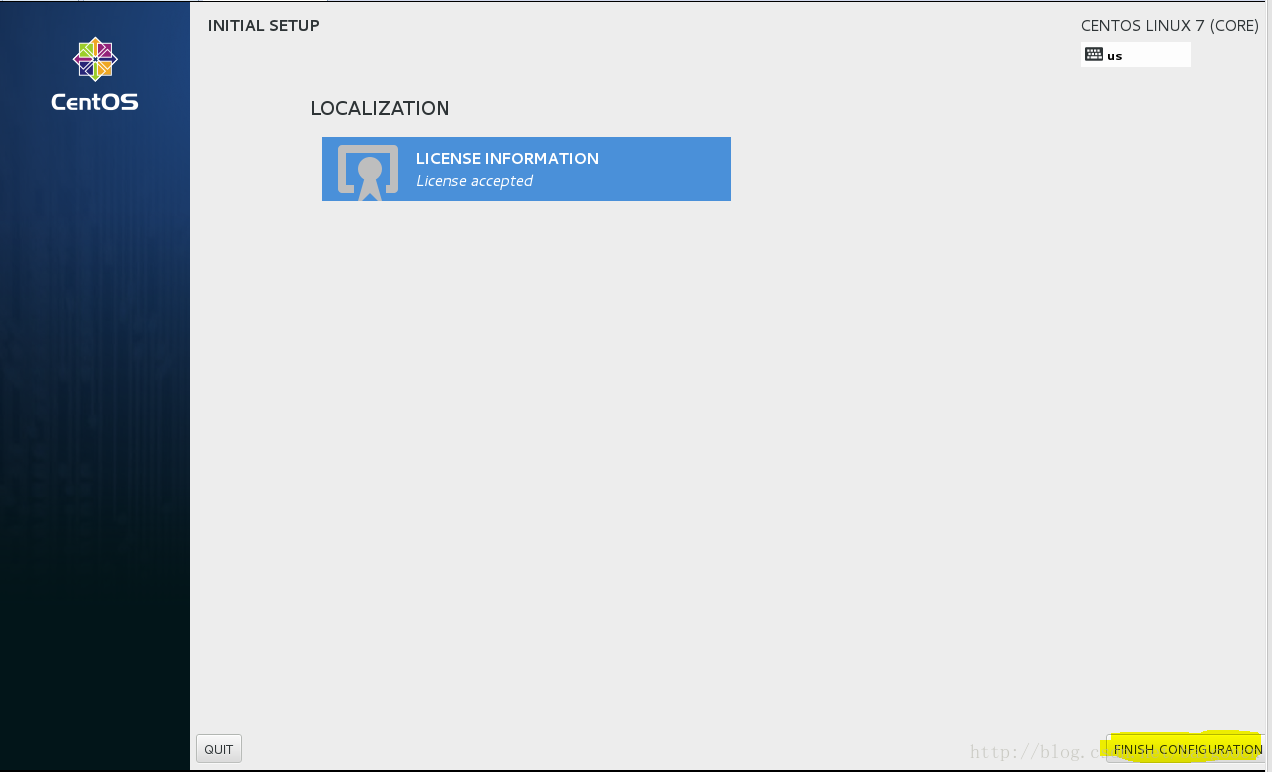
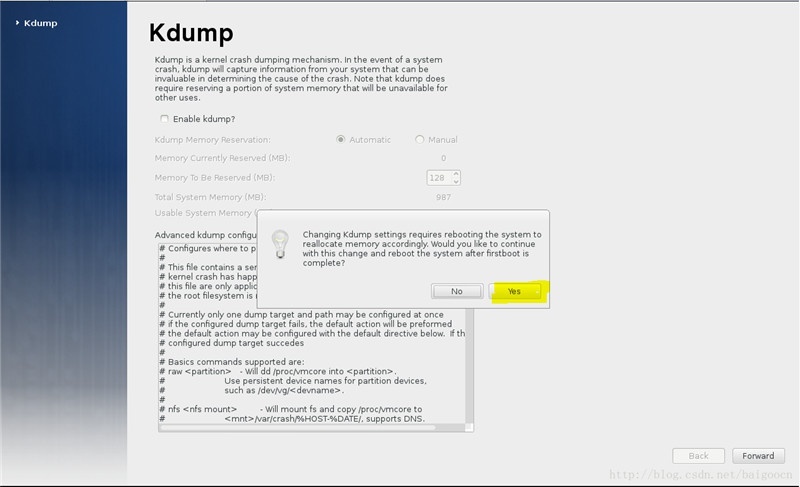
16、 At this time, the system will restart, log in as the ordinary testuser user just created, enter the password, and you can enter the desktop.
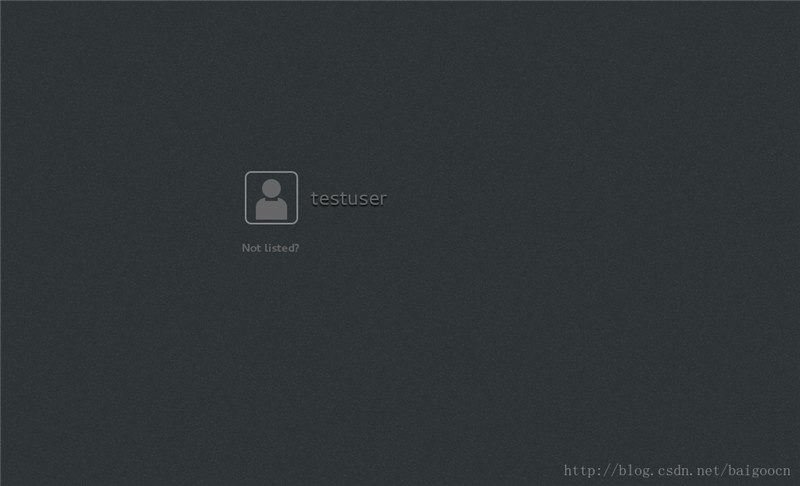


17、 After entering the desktop, the welcome interface appears, select the default English and it is OK, then Next...Next...
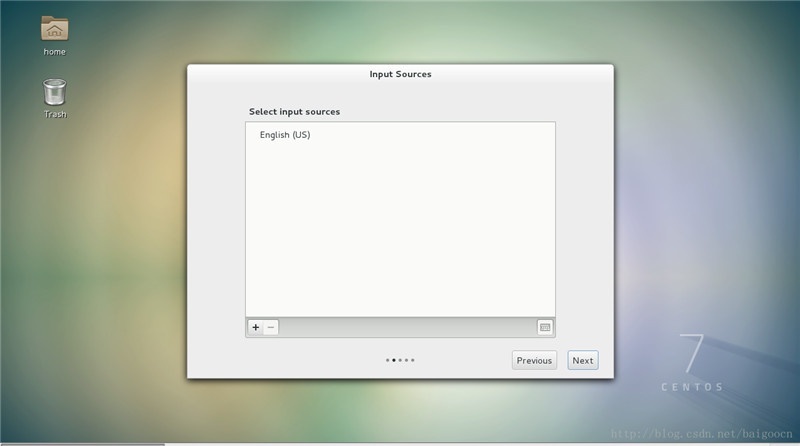

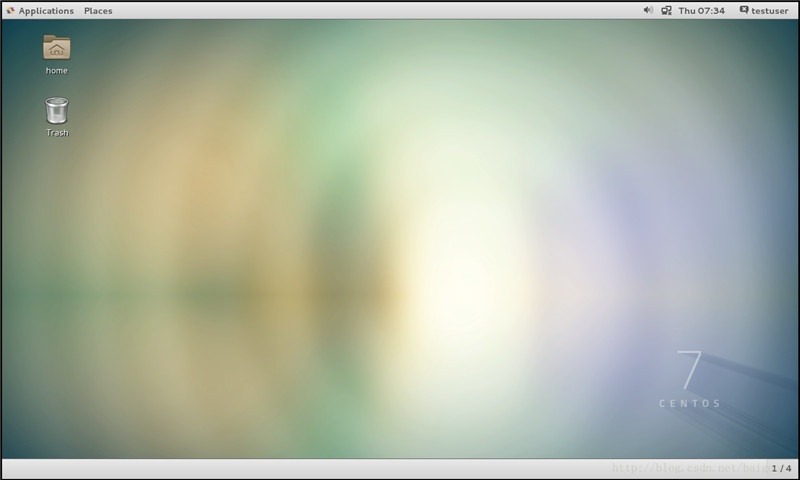
At this point, the installation of CentOS 7 has been completed. Is the desktop beautiful? Excellent!
The above is the whole content of this article, I hope it will be helpful to everyone's study.
Recommended Posts